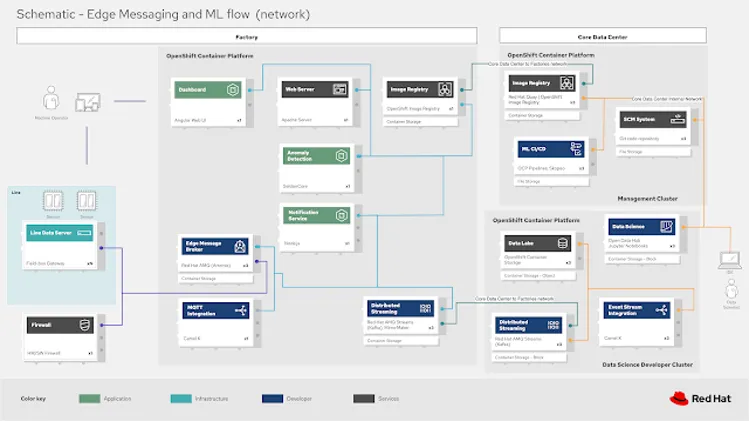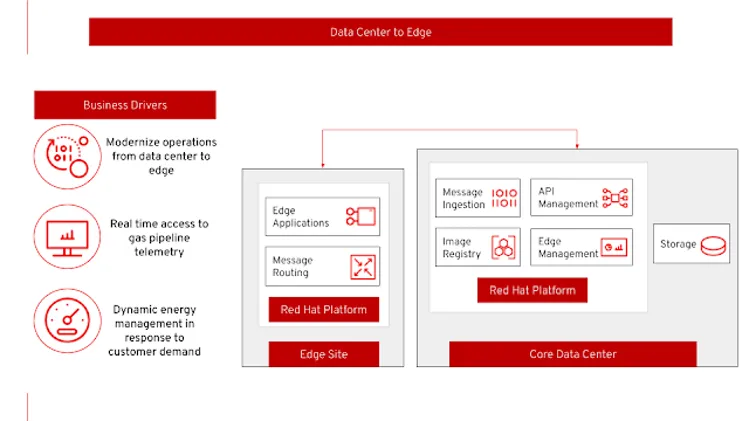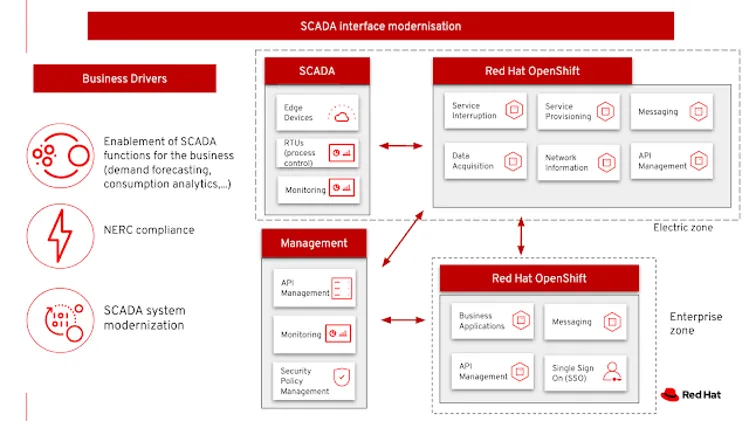Infrastructure remains a major investment for most organizations, both on premises and in the cloud. You've invested heavily in infrastructure, applications, processes, and policies. Even though you need to adopt new platforms and technologies, you can't just throw out your existing assets. You must balance new technologies and approaches with support and modernization for existing critical systems.
For the past few years, Red Hat's Portfolio Architecture team has been developing reference architectures based on customers' real-world use cases in various industries. We have multiple criteria for developing and vetting an architecture collection before publishing it, which you can read in my intro article about Portfolio Architectures.
We're publishing these architectures for anyone's use on our Red Hat Portfolio Architecture Center and Portfolio Architecture Examples repository.
This article presents seven infrastructure architectures. I provide a short overview of each and allow you to explore them in-depth on your own.

In each of these architectures' GitHub repository, you'll find a table of contents outlining the technologies used, several example schematic diagrams with explanations, and a link to open the diagrams directly into the online tooling in your browser.
Cloud to edge
The cloud to edge architecture covers the use case of providing a consistent infrastructure experience from cloud to edge and enabling modern containerized applications at the edge.
(Note: this project is a new architecture and is currently in progress. I'm sharing one of the schematic architecture diagrams, and you can monitor this project for updates as it progresses to completion.)

This use case brings cloud-like capabilities to edge locations.
[ Learn how to Modernize your IT with managed cloud services. ]
Datacenter to edge
The datacenter to edge architecture covers the use case where infrastructure companies in the energy and utilities industry operate across a vast geographical area that connects upstream drilling operations with downstream fuel processing and delivery to customers. These companies need to monitor the condition of pipelines and other infrastructure for operational safety and optimization.

The use case brings computing closer to the edge by monitoring for potential issues with gas pipelines at the edge.
Hybrid multicloud management with GitOps
The hybrid multicloud management with GitOps architecture provides a stable and simple container platform for developers and engineers that's secure, supports a hybrid environment, and runs on multiple cloud solutions. It uses an automated infrastructure-as-code approach that manages versioning and enables deployments according to the supplied configurations.

The use case manages hybrid and multicloud cluster life cycles, secure configurations, and credentials. It uses GitOps for an infrastructure-as-code approach. It also provides cross-cluster governance and application life-cycle management.
[ Learn more by downloading event-driven architecture for a hybrid cloud blueprint. ]
SCADA interface modernization
The SCADA (supervisory control and data acquisition) interface modernization architecture targets energy providers in North America seeking compliance with North American Electric Reliability Corporation (NERC) regulations by modernizing interfaces between their business applications and their SCADA systems. This modernization also provides better information consumption that can be combined with artificial intelligence (AI), machine learning (ML), and decision-management tools to address customer needs.

The use case provides interfaces with SCADA systems that are compliant with NERC regulations, creating different layers of API gateways to protect business services depending on the network zones.
5G architectures
5G is the latest evolution of wireless mobile technology that aims to enable the delivery of highly immersive experiences for people and ultra-reliable, low-latency communication between devices. At the heart of each 5G network lies the 5G Core (5GC).
[ For more on 5G, read Expanding 5G with the 5G Open HyperCore architecture. ]
Telco 5G Core: on premises
The telco 5G Core (on premises) architecture conceives 5G Core as a set of disaggregated, cloud-native applications that communicate internally and externally over well-defined standard interfaces. Each 5GC component is implemented as a container-based application and is referred to as a cloud-native network function (CNF).

The use case is ultra-reliable, immersive experiences for people and objects when and where it matters most.
Telco 5G with hyperscalers
The telco 5G with hyperscalers architecture describes a 5G solution built with open source technologies at the core that works across any hyperscaler.

The use case is building adaptable, on-demand infrastructure services for 5G Core that can deliver across diverse use cases with minimal capital and operating expenditures (CAPEX and OPEX).
Telco 5G: radio access networks
The telco radio access networks architecture serves a use case based on the fact that digital transformation of mobile networks is accelerating and cloudification is increasing. Radio access network (RAN) solutions are now taking advantage of the benefits of cloud computing.

Learn more
These are seven of the many reference architectures Red Hat's Portfolio Architects have already published, and we'll continue to add more as we complete them. If you are interested in more architecture solutions like these, feel free to explore the Portfolio Architecture Examples repository.
This article originally appeared on Eric D. Schabell's blog and is republished with permission.
About the author
More like this
14 software architecture design patterns to know
Getting started with socat, a multipurpose relay tool for Linux
How Do We Mentor the Next Generation of IT Leaders? | Compiler
compiler-re-role-technical-support
Browse by channel
Automation
The latest on IT automation for tech, teams, and environments
Artificial intelligence
Updates on the platforms that free customers to run AI workloads anywhere
Open hybrid cloud
Explore how we build a more flexible future with hybrid cloud
Security
The latest on how we reduce risks across environments and technologies
Edge computing
Updates on the platforms that simplify operations at the edge
Infrastructure
The latest on the world’s leading enterprise Linux platform
Applications
Inside our solutions to the toughest application challenges
Virtualization
The future of enterprise virtualization for your workloads on-premise or across clouds
